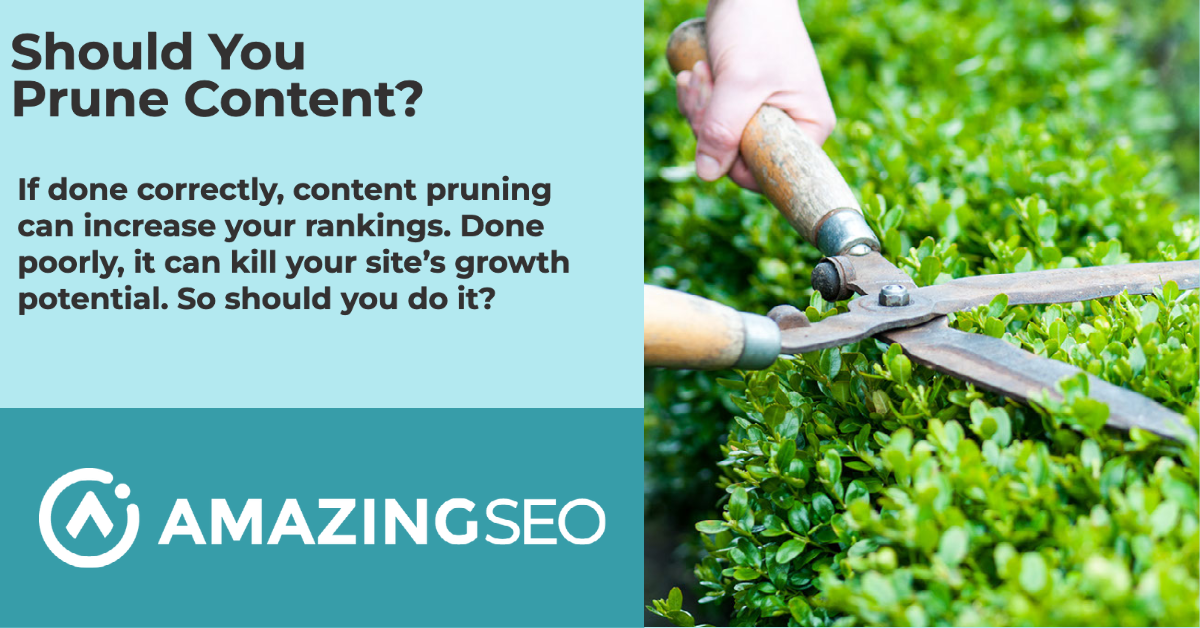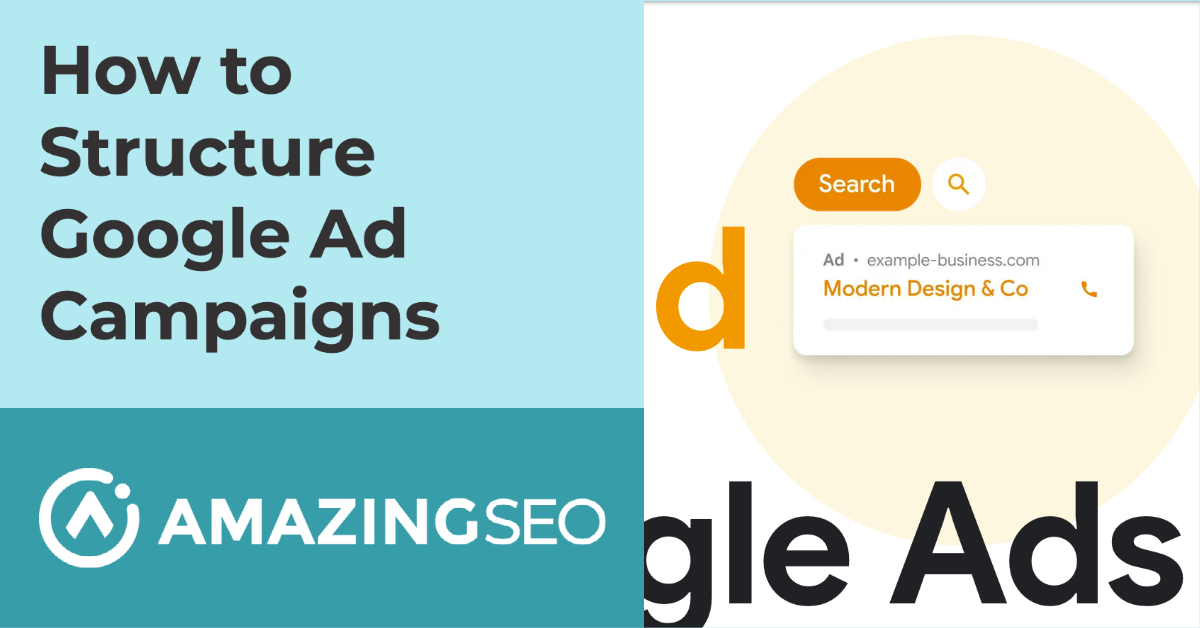Should I Prune Website Content?
November 7, 2022

After you’ve spent years consistently adding content to your site, eventually you must ask yourself: “What content do we keep, and what content do we delete?” This is a difficult question for many site owners because done well, removing poor performing content can dramatically help your website. At the same time, if done carelessly, it could be the demise of your site’s rankings you’ve worked so hard to build up.
In this blog post, we will discuss the advantages and disadvantages of pruning website content and how each one will affect your online business.
Advantages of Pruning Content

As your site ages and accumulates content, keeping up with updating existing content can become overwhelming. As a result, many pieces of content become outdated or irrelevant over time. Pruning helps to get rid of this old, useless content and could help your site rank higher in search engines.
Here are all the advantages of content pruning for your site and some general examples of how you can complete each one for your organization.
Higher Quality Articles
Once you get rid of the low-performing articles on your site, you’ll be left with a higher-quality collection. This will be more valuable to your readers and also help improve your brand image.
Search engines like Google will also give your site more authority since you only have top-performing pages. The result will be higher rankings and more visibility, ultimately driving more eyes toward your products or services.
Improved User Experience
As individual pages rank higher in search engines, those pages often get the most attention from site owners. That means that the articles will never include updated content from the day they were published.
By pruning your website content, you’ll be removing any articles that have become irrelevant over time because of outdated information.
Not only will you be providing users with a better reading experience, but you’ll also be making it easier to navigate your site. Users will have an easier time finding the information they need.
Get the Most From Crawlers

Bot crawlers help Google and other search engines index your site so that it can appear in search results. A crawler will only index a specific number of pages on your site. The more pages you have, the lower the chances are the crawler will get to every single page on your site.
If you have a lot of low-quality or outdated articles, the crawler may not get to your higher quality content at all. Pruning your site will help make sure that the crawler can easily find your best articles, giving you the best chances to rank and providing a better experience for humans.
Feeding the Algorithm
Google’s main product is its search engine and it does everything it can to ensure search results rank the most helpful content first. The main method Google uses is creating an algorithm that measures specific page metrics to determine if a page is helpful.
By pruning old content, you are showing Google you also care about helpful and relevant content. The actions you take will prevent rank drops from future algorithm changes.
Better Internal Links
Internal and external links are powerful SEO strategies that can help your site rank even higher in search engines. Using internal links properly helps people spend more time on your site and lowers your bounce rate. It also helps pass on valuable SEO juice to articles you are trying to rank.
Removing unnecessary content allows your link juice to be strategically given instead of being spread out all over the place. It also makes it easier to direct users to the most helpful content on your site.
Disadvantages of Pruning Content

Pruning content has the potential to improve your search rankings and raise the quality of your site. However, if you don’t know what you’re doing, you can actually do the opposite of what you intended and harm your site’s existing rankings and its growth potential.
Here are all the disadvantages you need to be aware of when considering pruning your site content.
Website Content Is Too Thin
Newer sites that do not have a lot of existing content, less than 30 blog articles for example, don’t need to be thinking about pruning content. At this point, there aren’t enough pages for search engines to consider your site authority and pruning will only make the problem worse.
Your site needs time to grow and produce enough content to make pruning a beneficial option. Until then, focus on producing more content.
Hard to Measure Quality Content
Without consulting an SEO expert or completing in-depth research on pruning, it is hard to know how to measure the quality of page content. Brands will often use metrics like traffic, time on page, or backlinks as a way to measure quality.
These metrics can be helpful but they don’t always give the whole story. A page with a low traffic number could still be a high-quality article if it has high-quality backlinks.
Before implementing your strategy it’s helpful to have a good idea of what a high-quality page of content looks like. This will help you from pruning content that was helpful for visitors and had the potential for future growth.
Stunt Future Growth
SEO is a practice that takes a long time to show results. An article you write today may not start to rank for 6 months to a year. It may never even rank at all which is why you must consistently produce new content. The biggest disadvantage to pruning content is killing any opportunity for that pruned content to rank in the future.
The more your site’s authority grows, the better chances lower-performing articles will have to rank. You want to be absolutely sure that the article you are pruning are those with the lowest potential to rank in the future.
Pruning Your Website Content
Pruning website content has the potential to help your site rank better in search engines, perform better for visitors, and appear as an authority in your niche. At the same time, pruning content can limit your future site growth as well as spread your site content too thin. Make sure to carefully weigh each advantage and disadvantage in this article to see if the risk is worth the SEO rewards.
Recent Blog Posts
Will Outbound Links Help Your SEO?
There's a common belief that including links to well-known websites like CNN or Wikipedia can boost your web pages' search algorithm ranking. However, the reality is that these links won't significantly improve your SEO. While [...]
Why Its Essential to Create Conversion Tags for Google Ads
Google advertising plays a crucial role for many businesses by acting as a digital billboard. When users search for a product or service, your ad has the opportunity to appear at the top of the [...]
Pinterest SEO Guide: How to Stand Out on This Platform Shoppers Love
Pinterest has become a popular social media platform for brands to connect with influencers and consumers. This image-focused site allows users to discover and save images from the internet onto boards, making it ideal for [...]
How to Structure Google PPC Ad Campaigns
Google Ads are a highly effective and easy-to-use form of advertising that businesses of all sizes can take advantage of. With a 4.85% click-through rate (CTR), Google outperforms Facebook's 1.32% CTR. Additionally, Google's average cost-per-click [...]
Why Focus on SEO During a Recession
Businesses of all sizes are feeling the pinch as we enter into a recession. Budgets are being slashed, and marketing is often one of the first areas to be cut. But while it may be [...]
How to Use non-branded keywords for SEO
While it can often seem like branded keywords, “Nike shoes”, “Apple computer”, “Samsung phone” “Nestle hot chocolate” dominate the internet, these branded keywords aren’t the only terms users search for. In fact, many consumers are [...]





